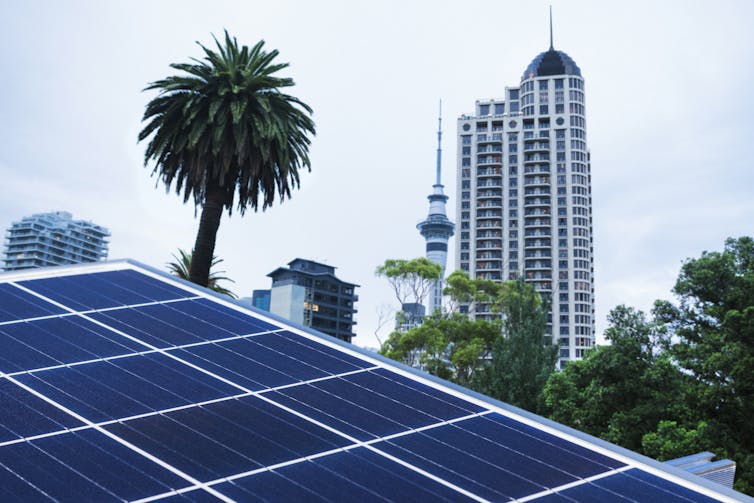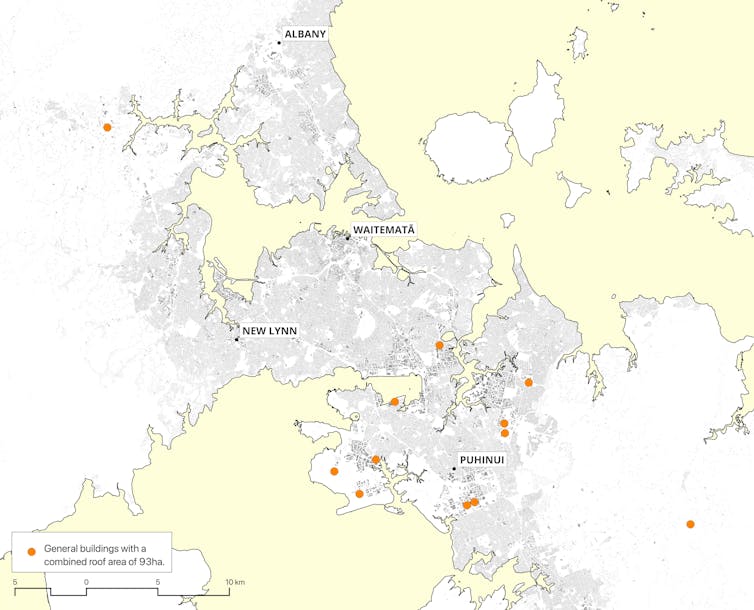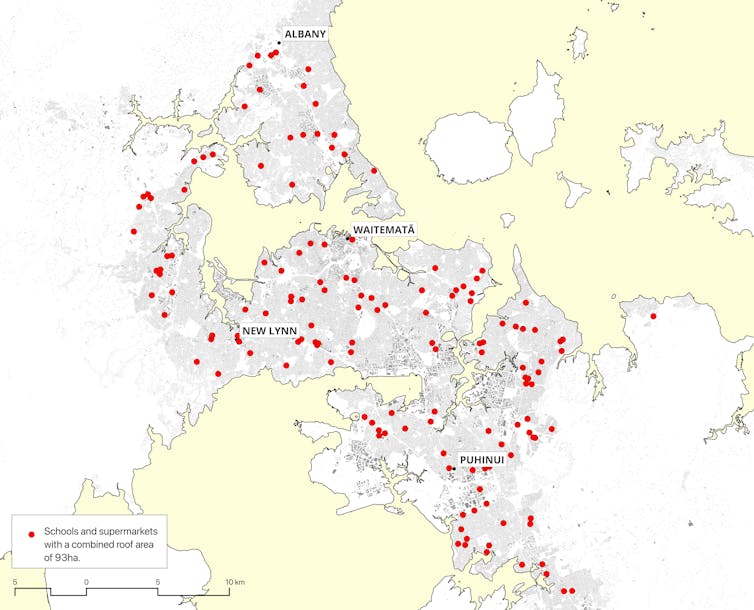By Priscila Besen, Andrew Burgess, Ann Morrison Imelda Piri & Stacy Vallis*
New Zealand’s current electricity supply crisis requires immediate solutions.
But we argue the government’s emphasis on importing natural gas and construction of centralised solar farms is a missed opportunity.
The case against gas has been highly publicised because of its greenhouse gas emissions and substantial costs.
But the government’s focus on large solar infrastructure in rural areas, away from our main centres, misses a chance to address two urgent issues at once – the need to cut emissions and to adapt to climate impacts.
Instead, we should plan local renewable energy generation, integrated into communities, to improve New Zealand’s energy security and disaster preparedness.
Centralised versus decentralised energy systems
Centralised renewable electricity generation using large-scale hydro, wind and solar infrastructure helps to cut emissions and move New Zealand closer towards a fully renewable grid. These projects can be implemented quickly and are a positive step.
However, we must also focus on climate change adaptation. Creating more renewable electricity alone won’t help during power outages, which might become more frequent due to climate-related extreme weather events.
During Cyclone Gabrielle in 2023, almost 234,000 homes lost power, some for over a week.
Solar technologies offer opportunities to distribute electricity generation and storage by integrating power into buildings and cities. Bringing electricity generation close to where it is used helps to increase resilience during extreme weather events and other disruptions to power lines, including earthquakes.
Although large solar farms generate clean electricity at scale, they keep generation far away from where it is used. This applies new technologies in an old-fashioned way, centralising power generation in a few locations, controlled by a handful of companies.

Government policies and incentives could help to integrate solar generation into communities to create resilient places, with access to their own power during natural disasters and outages.
For instance, integrating solar panels into schools, public buildings, hospitals and homes would enhance resilience, especially for our most vulnerable populations.
While there are already some projects of this type through the New Zealand Solar Schools Project and Community Renewable Energy Fund, much more could be done. Instead of using productive farmland distant from communities, we could better utilise the many rooftops and walls available in cities.
Even though solar power’s peak generation around midday does not align with peak electricity demand in New Zealand, every small solar system connected to the grid contributes. At the national scale, the water flowing into hydro lakes could be held back in the dams to meet evening peaks in demand when solar is no longer available.
SolarZero’s virtual power plant, made up of thousands of home batteries, is already helping New Zealand get through cold snaps by feeding electricity to the grid. Photovoltaics have become significantly more affordable and there are many finance options available. But these technologies are still not accessible for many households, especially rental properties.
Policies and incentives could make it easier for everyone to afford solar-powered homes. Having public buildings with solar panels in every community would enable basic access to energy for everyone.
Potential of distributed solar power
To visualise how solar infrastructures could be distributed in cities, we use the size of New Zealand’s largest solar farm as an example.
With a total land area of 93 hectares and 63 megawatts of capacity, the solar plant will generate enough renewable energy to power approximately 13,000 homes. We explore how this land area could be distributed on Auckland’s rooftops.

The map above applies the total land area of the solar farm to 14 of the largest building rooftops in Auckland.
The map below distributes this power more evenly to communities by utilising the rooftops of schools and supermarkets, totalling 167 buildings.

Both scenarios show how we could better utilise the space available on rooftops in our cities. The second scenario presents a higher potential of creating resilient communities due to its geographical distribution; these places could help locals during power outages.
Locally generated solar power is key to resilient, sustainable cities and New Zealand’s transition to a zero-carbon future. Decentralised renewable energy, especially building-integrated solar power, brings power generation closer to consumption.
In a country subject to multiple natural hazards, investment in solar for public buildings and homes could bring several benefits for disaster resilience and climate change mitigation.
We would like to acknowledge the contribution by Kyle Paala, who worked on this research project as part of his Masters in Architecture.![]()
*Priscila Besen, Lecturer in Sustainable Architecture, Auckland University of Technology; Andrew Burgess, Senior Lecturer in Architecture, Auckland University of Technology; Ann Morrison, Associate Professor in Interactive Design, Auckland University of Technology; Imelda Piri, Lecturer in Environmental Engineering, Auckland University of Technology, and Stacy Vallis, Lecturer in Architecture , Auckland University of Technology.
This article is republished from The Conversation under a Creative Commons license. Read the original article.
35 Comments
The problem with installing solar for most people is that it represents a commitment to staying in the same house for a very long time. If you use power during the day and have an Roi of circa 7 years that isn’t too bad but if you work away from home and have an ROI in the 10-12 year range there are a lot of life events that can happen to make you move before you get your investment back.
on top of this there is the prospect of negative solar prices in places like Australia scaring people off.
If you sell earlier than expected, the value of the solar system is hypothetically captured in the value of your home.
Hypothetically, yes. In practice, probably not.
That's gotta be a reckons !?!
People don't value solar at install retail prices. See how little is installed.
In fact, it's even worse than that, given the various green topups available. They don't even value it at those prices on 1% finance.
SMR's should also be explored - clean energy and not weather dependent.
Small Modular Reactors aren't commercially available now, solar and batteries are. Solar is also MUCH cheaper
I don’t think they sell those for houses, and solar is already available today.
"Decentralised" but all the people are in the same city and subject to the same weather and daylight hours?
Storage and demand management.
That's why home Solar + Battery makes more sense from a resilience POV
Hydro dams are huge batteries. More from solar means less water drawdown.
Huge, but not if you want to double your grid, to displace the receding fossil energy.
Onslow would have been a good move, if BAU was possible. But for a number of concurrent (intended) reasons, BAU is not possible, and by several orders of magnitude.
I'm torn on this one, but by and large, the more panels in NZ before the inevitable global breakdown, the better. We can't manufacture them, but they are stored fossil energy, and will give for many years - time to get ready for a much simple way of life.
As far as warehouse and factory roof installation goes , I would say most of the modern ones would be to a similar design.
If a standard prewired module was made, able to be craned up and attached , it may bring the costs down similar to solar farm costs.
How many warehouses and factories have roofs strong enough to take the weight?
I've seen them installed on your standard concrete wall steel girder roof warehouse. Weight per square metre is low, wind up lift probably more of a concern.
I would think you would have a frame spanning from girder to girder.
Energy demand management and storage will be key to flatten peaks and move demand outside of peak times. Plenty of nifty ways to do that: preventing losses, HRVs, thermal batteries like hot water cylinders, house concrete slabs and ice, electrical batteries like EVs, capacitor-based battery banks, physical and chemical energy storage like dams and biomass.
Very good article
I wouldn't pay any extra just because a house has solar power.
Even in Riverhead?
I use a generator. On very rare occasions.
I would. Cheaper running costs should be capitalized into the price.
larger sample size required
Solar works well in Aussie and is very popular. But you n|need to store it on site or you will end up paying to sell it back to the grid thief's.. just wait.
NZ solar is less effective because we have to many areas living under the long white cloud of greedy supplier's, installers, electric co,'s, and of course ... Not as much much 🌞🌞
Bollocks to the sun comment.
I've been OTG for 20+ years, cost sub 5k to set up, owes sub 10k now, no maintenance and no generator-use for years.
And that's coastal North Otago - not optimal by any reckoning. Yet I've done the whole winter without my micro-hydro - house runs on 300 watts of PV.
Most people assume too much...
Have you seen MartyT on youtube? He did a good series on building a micro hydro form an old washing machine and how he wired it up to his house in the Marlborough sounds and how much he can use with said system and homemade powerbank using car batteries in series.
No but I will.
Mine is the GE motor, not the smartdrive.
Solar makes heaps of sense where AC is a big draw. You get both seasonal and time of day alignment and life is good. In NZ you have to shift either demand or supply. The dams aren’t big enough to hold excess from the summer into the winter in a meaningful way.
Yes,we only have storage for 10% of the inflow to our hydro lakes. It would seem increasing that would be a easy win, but the costs seem high. doesn't help that many of the best sites are in National parks.
We should definitely be subsidising solar to help all our energy and emissions problems. It baffles me that successive governments fail to see this, no matter how many experts tell them its the right thing to do. I guess when you the major shareholder of the gentailers who will tell you that distributed solar generation is madness (to protect their profits), then its easy to see why they don't do it. Which in itself is baffling.
We talk about spending $500m odd to build new LNG facilities etc. That's a subsidy of $5k for 100,000 NZ homes to install solar. If the government would subsidise a $10k solar system for 100,000 houses in NZ, you are talking about creating 500MW of generation capacity spread across NZ. Likely that's more like 300MW real world, but that's quite a large new power station.
Given the national grid is a public good if ever there was one, but that it's under the control of firms whose prime directive is profit, always gives me a "what were they thinking" moment. I'm for free markets, but the power market doesn't work as it hasn't been set up properly: the goal is individual profit rather than national development.
Personally, I want one of these units from Lavo in Australia who are a spin-off from Sydney Uni Engineering school. Available now and a much better solution than a battery wall.
The power companies aren't interested in distributed generation because of the loss of profitable control and the administrative and technical overhead. It shows in the desultory buy-back rates that only improve a bit when you take up a long contract. And then there was the move by one of the companies to try and charge solar users for connecting to the grid until government eventually stepped in.
Looks like the byd system, though they are all going to this stack type system.
The grid is run by transpower, they are an SoE, not a profit making private enterprise.
No power for 4 wks post cyclone G for significant parts of the Hawkes bay, The power station was damaged severely and couldn't get close to repairs any earlier.
Power outage for up to 1 week might be referring to Auckland..
Our govt would not stoop as low as the Spanish govt.
Skip the general stuff to 6m. https://www.youtube.com/watch?v=Iaz4z0bS9zg Spain's Solar Scandal
We welcome your comments below. If you are not already registered, please register to comment
Remember we welcome robust, respectful and insightful debate. We don't welcome abusive or defamatory comments and will de-register those repeatedly making such comments. Our current comment policy is here.